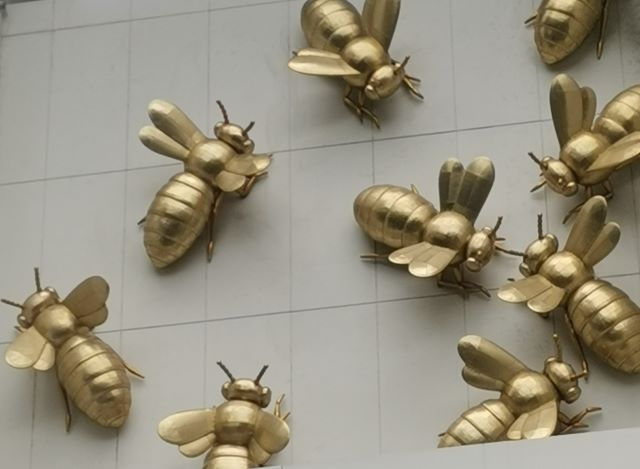
The Heart Garden and the Extreme Garden
The life force that supercharges Emma Cutting is transforming neglected nature strips into street gardens that support insect pollinators.
Emma started with the BEE1 garden on the corner of Moray and Cobden Sts, South Melbourne. She has prevailed through setbacks and disappointments to create and inspire street gardens bursting with plants and insect life.
Emma is returning life to lifeless soils and rolling back the impermeable covers of bitumen and monocultural grass to grow plants that support pollinators. Her passionate determination is matched only by her willingness to learn from her own experience and from others. The lessons have sometimes been tough – as when the gardens were vandalised – but that too has informed her approach. She goes with the opportunities and those who are willing to embrace them, rather than butting up against barriers. Along the way she has clarified her purpose and like many gardeners of distinction, her gardening approach and philosophy are constantly evolving.
Her gardens are deliberately planted to support pollinators.
Her inputs are determination, energy and care as well as bokashi, compost and worm juice. Radiating out from the nucleus of the BEE gardens are a growing number of street gardens – ‘street gardens beget street gardens’, as she says. Her dedication and enthusiasm has inspired a community of support in the neighbourhood.
The BEE gardens have been a bit of a proof of concept, a laboratory. Drawing on all that she has learned, Emma is now embarking on an ambitious project, The Melbourne Pollinator Corridor, to connect the Royal Botanic Gardens with Westgate Park, one street garden at a time. Since native bees can only fly around 500m it is important that the street gardens are separated by no more than that distance.
Surprisingly, bees are not the most common insects in the City of Melbourne. Beetles are. But amongst bees, the European honey bee Apis Melliflerra, is the most common bee. The honey bee is a super generalist, according to Luis Mata, the lead researcher of The Little Things that Run the City, whereas many native bees have an association with particular plants. Emma is increasingly using indigenous plants in her gardens.
A splendid Echium simplex was flowering recently in the BEE gardens. The flower spike was alive with honey bees, right there on the corner of Moray St which leads to the River and Southbank Promenade.
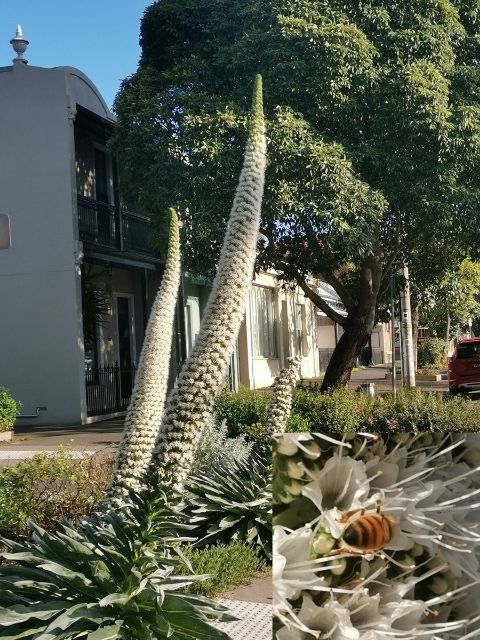
One step off the Southbank Promenade, Mirvac’s refreshed Riverside Quay offers shelter from the wind. A public square space designed by McGregor Coxall surrounded by food outlets is longing for its officeworkers to return.
The entrance to the Eureka Tower bounds one side of the public space on Riverside Quay. Above the lobby is a colony of bees created by sculptor Richard Stringer, commissioned by Fender Katsalidis. They are made from anodised aluminium sheet using cast aluminium for all the antennae and small bees’ legs. The sheets are riveted together using 110,000 anodised rivets.
While Emma imagines a pollinator corridor between the Royal Botanic Gardens and Westgate Park, the City of Melbourne’s emerging Southbank Boulevard makes it seem entirely possible that pollinators will be able to move between a mesh of landscapes, rather than a linear corridor.
Eureka Tower
An experiment is ongoing on the 92nd level of the Eureka Tower. Ecological artist Lloyd Godman has installed airplants, Tillandsias, at that level in an act of what has been termed ‘extreme gardening’. Conditions on the 92nd level are harsh. The site is completely exposed to sun, high wind and rain. The Tillandsia ‘cell’ must be strongly tethered to the building since wind speeds are so high.
For many years, Godman has been investigating how public art and buildings can relate in a truly sustainable way. He observed (what seems quite obvious when he points it out) that cities are made up of reconfigurations and reconstitutions of natural materials – such as silica, sand and iron. A high rise building is like an exposed cliff face. Even on cliffs, plants find their way into niches where there is little soil or nutrient. Godman became fascinated with Tillandsias, part of the bromeliad family. Tillandsias are epiphytes meaning that they grow on other plants. Where the leaves connect with the stem, a vase like funnel forms, where water and nutrients gather. Since the Tillandsias SWARM project was installed at Eureka in 2014, the plants have needed no maintenance, no watering. Over time, they may need thinning if they get too heavy.
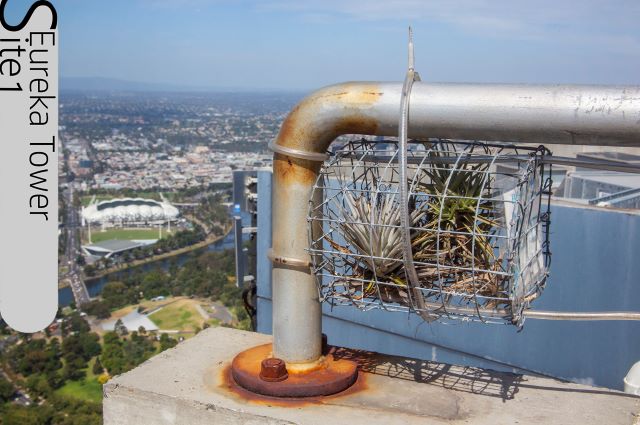
Since being introduced to Godman’s work, I have taken a closer interest in the places where water gathers and plants subsequently appear – the depression where a puddle forms and later moss grows, the crack in the footpath where weeds emerge, or at the base of the downpipe where the water drips and plants take hold.
These are two models of sustainable gardening at either end of a spectrum – Emma Cutting’s down to earth, community driven, care based approach and Lloyd Godman’s very interesting and instructive experiment in maintenance free extreme vertical ecological gardening.
1 BEE Gardens – Bees, Education and Environment
Read more about
Emma Cutting The Heart Gardening Project and (almost) daily on instagram
Visit Lloyd Godman’s website to find out more about his fascinating work – all freely available as ebooks.
Find out more about the insects that make Melbourne their home in Luis Mata and others The Little Things that Run the City: insect ecology, biodiversity and conservation in the City of Melbourne, 2015

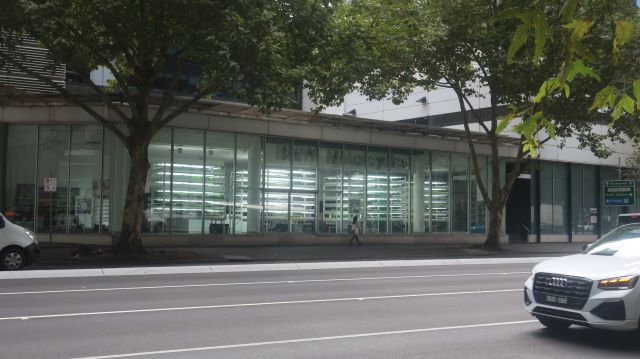

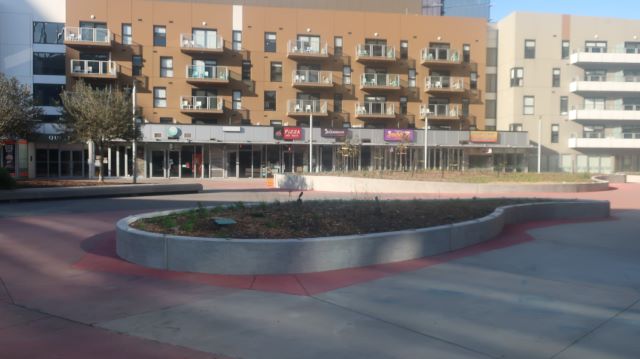
Judy
Fascinating and inspiring Thanks Another very interesting Port Places